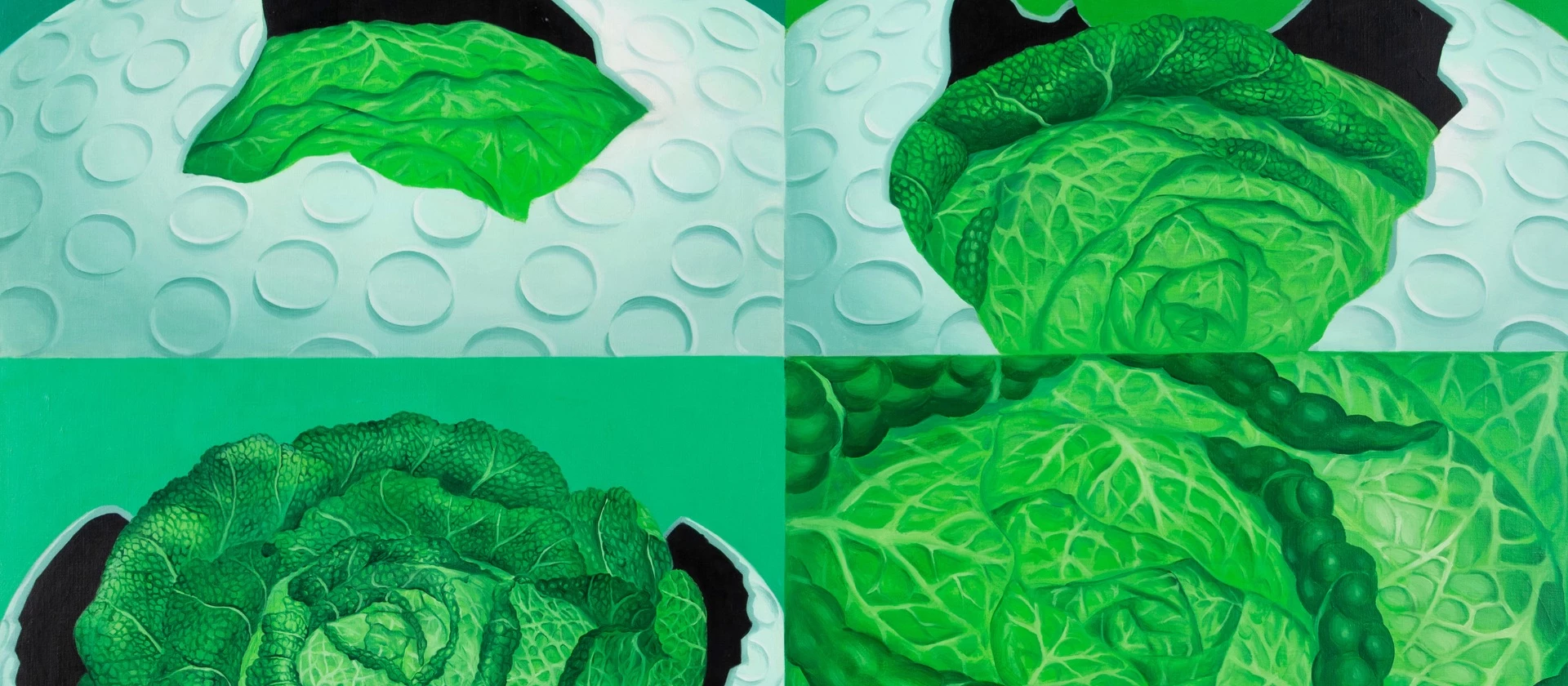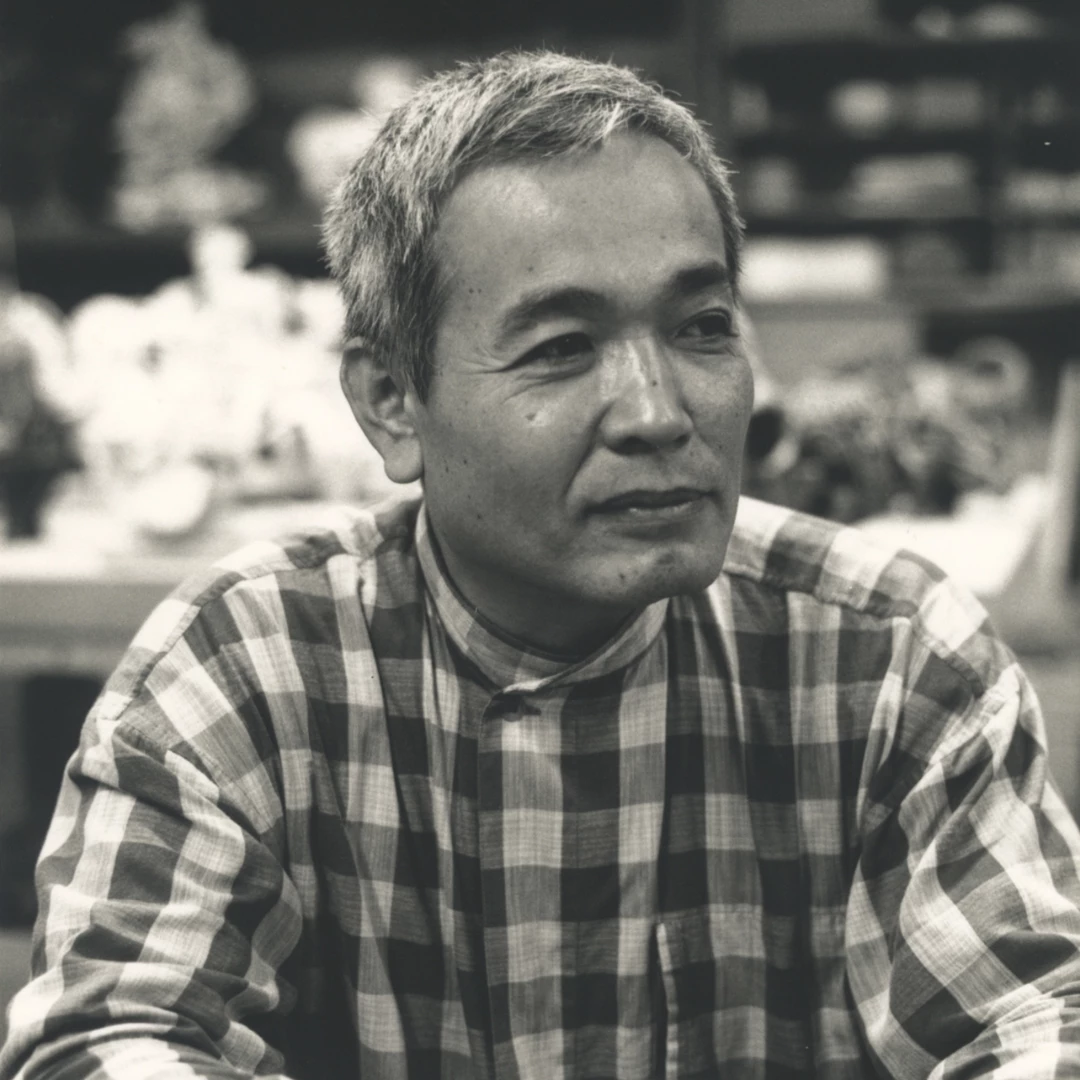Tiger Tateishi (タイガー立石), pseudonym of Kōichi Tateishi (立石紘一), was a Japanese painter, mangaka, illustrator and ceramicist.
Born Koichi Tateishi in December 1941, a few days after the Pearl Harbor attack (as he liked to point out), Tateishi grew up in a coal mining town in Kyushu. His earliest memories are of two US bombing raids on the mine where his father worked. The post-World War II period is one of hardship and young Tateishi finds an escape route into the world of Shōwa-era manga and films, soon beginning to draw. Incredibly precocious, he won his first art award at the age of six and saw his work published in a weekly manga magazine at the age of thirteen. As soon as he finished high school, he moved to Tokyo, where he enrolled at the Musashino Art University, soon joining the Dadaist avant-garde of the early 1960s.
In 1963 he participated in the Yomiuri Independent show with Community, a huge display of panels covered with artefacts: series of modern detritus such as guns, watches, model cars and aeroplanes alternated with rows of carefully arranged pieces of wood, resembling Stone Age tools. The work attracts the attention of critics, but Tateishi's subsequent output is something completely different. As if determined to confuse his audience's expectations, in 1964 he presented Like Tateishi Koichi, a brightly coloured, billboard-like collage composed of elements such as Mount Fuji, a creature from an Osamu Tezuka manga and massive three-dimensional letters (think Hollywood blockbuster titles).
During the 1960s, Tateishi consolidated his reputation as an artist by producing parodic collages in tune with the pulse of post-war Japanese society, marked by economic growth and cultural schizophrenia. Works from this decade use recurring motifs such as Japanese battle flags, locomotives, space capsules, atomic explosions, Godzilla, political figures, celebrities and the iconic Mount Fuji. The tiger began to appear in his work - a symbol of a China reeling from its first nuclear test - often accompanied by the face of Chairman Mao. Curiously, Tateishi adopted 'Tiger' as his stage name at this time.
In the late 1960s, Tateishi declared that if he was to make Pop art, he might as well go back to his roots using the Pop medium par excellence, manga. He became a prolific cartoonist, working with the traditional black and white sequential format. Mainly centred on brilliantly conceived gags, his manga became ubiquitous in Japan, to such an extent that Tateishi began to be identified as a cartoonist. Right at the height of his fame, Tateishi suddenly left Japan in 1969, moving with his wife to Milan, Italy, where the two lived for the next thirteen years. In Milan, he began to produce oil paintings in sequential format, which tell abstract and surreal stories, somewhere between dream and psychedelia, often inspired by the science fiction writing of authors such as Robert Sheckley, J.G. Ballard and Robert Heinlein.
The Milanese paintings are cosmic images, gradually transforming into cabbages, lemons, diamonds, roses and human heads, while his characters turn into inanimate objects or alien entities. Living in Italy frees Tateishi from Japanese cultural iconography, allowing him to play more openly with Western art history (ex. In 'Tiger Guernica', 1970) and with his own unconscious. In Italy too, Tateishi achieved great commercial success, starring in gallery exhibitions, and authoring illustrated books, magazine covers and rock albums, working with Ettore Sottsass, among others, from 1971 to 1974.
In 1982, he decided to move again. Tateishi returned to Tokyo, moving with his wife in 1985 to a renovated old farmhouse in the Chiba countryside. With his return to Japan, Tateishi began to re-examine his past production, creating prints of selected paintings, resuming manga production and experimenting with new media. In the mid-1980s, he started to create picture books, at the rate of about one a year. His first publication, Tiger in the Land of Dreams (Fukuinkan, 1984), is a wordless account of the metamorphic adventures of a green tiger. A contemporary series of coloured pencil drawings, mounted on traditional hanging parchment supports, it stands out for its understated, Nihonga-like colouring and increasingly surreal images.
After his untimely death in 1998, the spotlight on Tateishi faded, perhaps also due to critics who, at the time, struggled to fully understand those artists who, like Tateishi, had straddled different arts and disciplines. A welcome step towards the appreciation of Tateishi's work was the major retrospective organised at the Chiba City Museum of Art in Japan in 2021.

